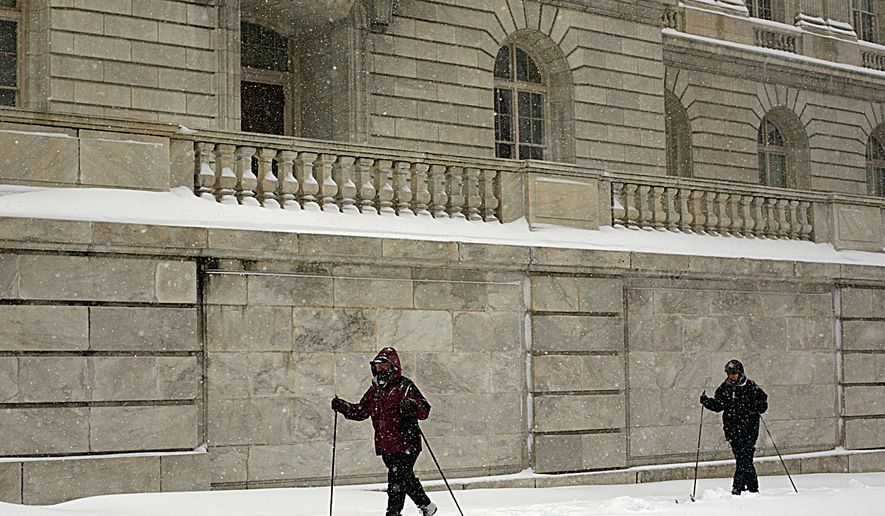Congress this month is beginning a 10-year, $752.7 million renovation project on the Cannon House Office Building that will include replacing all of the pipes and plumbing, some of which are more than 100 years old.
The construction is in its first phase now as workers prepare to update plumbing, heating and cooling, preparing for bigger fixes beginning in 2017, when contractors will shut down a wing of the building at a time to fix the marble facade and repair systems that have broken down.
“The century-old building is plagued by safety, health, environmental and operational issues that are rapidly worsening,” said Bill Weidemeyer, superintendent of the House. “Many of the buildings systems are original from the 1908 construction.”
Cannon is one of three office buildings to the south of the Capitol itself, and it houses about 140 members of the House. The building’s failings have become grist for social media, with one particularly infamous online video showing staffers collecting buckets of water pouring out of a wall.
Some systems in the building are so old that replacement parts aren’t available, and workers have needed to build custom parts, Mr. Weidemeyer said.
The construction will be going on at the same time as workers are repairing the dome on the Capitol — a project that’s projected to last through 2016. The dome’s exterior is currently covered by scaffolding, while the interior has a protective cushion around the inside of the dome.
The Cannon building’s exterior is also in need of work. Large pieces of the decorative stone around the roof began falling off with such frequency that workers installed netting last year to make sure no one was hurt, Mr. Weidemeyer said.
Restoring the dome is expected to cost $60 million, but the Cannon refurbishment is projected to be $752.7 million. By comparison, the entire underground Capitol Visitor Center complex was built for $621 million.
At 826,465 square feet, the House office building will cost more than $900 per square foot to renovate.
Only about $100 million of the Cannon restoration funds have been appropriated by Congress so far.
The initial phase of work is mostly updates. The heavy lifting begins in 2017 when the wing along New Jersey Avenue will be shut down, closing 32 offices that will have to be relocated, said Ryan Colombo, construction manager for the House superintendent.
He said the work has been building up for years.
“We’re kind of doing band aids at this time. We really need a time to come in and do everything,” Mr. Colombo said.
The phases each last two years and run through November 2024. Phase 2 will involve the side of the building facing Independence Avenue, phase 3 will be the wing along First Street and the final phase will shut down the corridor parallel to C Street. Scaffolding will only cover one wing at a time.
The renovation will also expand the fifth floor of Cannon, Mr. Weidemeyer said. Installing new systems in the basement will displace some offices there, so the extra space on the fifth floor will be needed to compensate. The elevators will also be updated to serve all floors.
Officials said the repairs will mean fewer leaks, a taller ceiling in the basement when overhead wires are removed and better temperature control in individual members’ offices.
Construction began on the oldest Congressional office building in 1905 and the first class of lawmakers occupied the building in 1908.
When asked if it would be more efficient to just tear down the building and start from scratch, Mr. Colombo said Cannon is worth saving because of its history. Four future presidents have had offices in Cannon: John F. Kennedy, Richard Nixon, Lyndon B. Johnson and Gerald Ford. Jeannette Rankin, the first woman to serve in Congress, also had her office in the historic building.
Prior to Cannon being built, members worked out of their desks on the House floor, leaving them little room to hold hearings or meet with constituents. As the first office building, Cannon allowed members to start hiring staff and changed the way business is done in Congress, said Matthew Wasniewski, historian of the House of Representatives.
• Jacqueline Klimas can be reached at jklimas@washingtontimes.com.




Please read our comment policy before commenting.